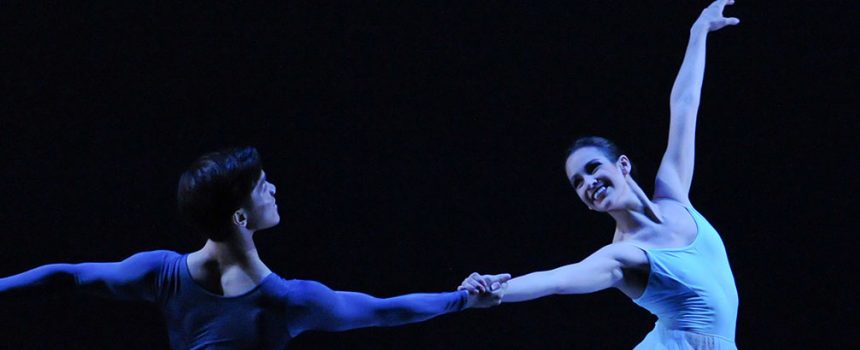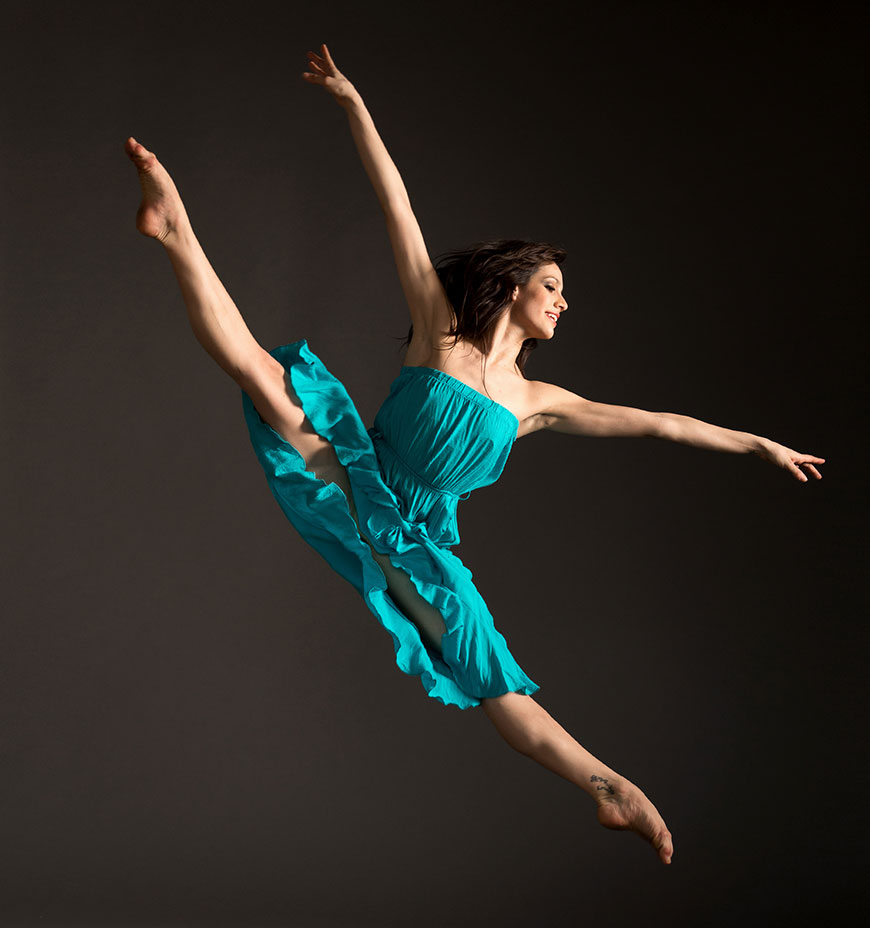#FacesOfBalletPgh: Daniela Moya

There’s Only Plan A: Why One Ballerina Followed Her Dream to the United States
For Daniela Moya, ballet has always been part of the plan. She started dancing at age 4 – an age when “ballerina” isn’t an uncommon career aspiration. But for Daniela, this was no passing phase. Ballet had her hooked – from the rigor of training to its release of emotion – and she became determined to make it her life’s work. Six years ago, the PBT Corps de Ballet dancer left her family, friends and hometown of Mexico City to chase her dream to the United States. She accepted a spot in Joffrey Ballet’s trainee program in Chicago and went on to train in the PBT School Graduate Program before signing with the company in 2016. The transition hasn’t been without its challenges. Thanks to the love of dance and the support of Facetime, family visits and her loyal pups, she can still confidently say, “there’s only Plan A…and there’s only going forward.”

Describe your first encounter with ballet. What hooked you?
“My first encounter was when I was four. My mom took me because the doctor said ballet would help (with my posture). I walked like a duck. I just really liked ballet and the challenge of it. It’s really disciplined. Technique-wise, it’s not where your body wants to go naturally. You don’t force it, but you have to train your body to move that way for it to be correct. That’s the hard part. Also, what I love about it is the artistry you can bring to it so that it looks effortless and natural.”
When was your ballet “epiphany” – the moment you knew you wanted to pursue this art form not only as a hobby but as a career?
“Since I was little I always said I was going to be a ballerina. That was always my thing. My parents were like, ‘Yeah, yeah, sure, sure, you’ll grow out of it.’ And then one summer intensive (at the Royal Ballet) when I was a teenager, I went to London and it was one of the first times that I went out of the country and away from my family. We created this production at the end of the program, and my mom came to watch. Just waiting in the wings to go out gave me that adrenaline rush, and I thought, ‘I want this. This is it.’”
What was one challenge that you had to overcome in order to make your dream a reality?
“There were many – but three in particular. First of all was my posture. In order to do ballet, I really had to concentrate. And still today, I try to focus on my posture, because it’s my weak point. Second was trying to like myself in order to be healthy. You look at yourself in the mirror in a leotard and then you get obsessed with how skinny you are. It was overcoming that mental (fixation) on how I looked. You just need to dance and not focus on your body. Third was just moving away from my family. When the moment came it was, ‘Yep, I’m going (snaps fingers).’ But once I was here I thought, wow I did leave everything behind. (But now) there’s only going forward…I guess my mind was set on Plan A. My mom was like, ‘but what if it doesn’t work out? Just come back. Plan B.’ And I said, ‘No, there’s only Plan A.’ I already moved away. I left everything – my friends, my family. I’m by myself. There’s only one way. Whatever means moving forward. That was it.”
What makes all of the hard work and sacrifice worth it to you?
“I guess just getting better. You could be at the top of your class, and then you move to another class and you’re at the bottom again. When I moved to Chicago, it was completely different, but I really wanted it. (Sometimes you think) maybe I’m not good enough. I think I am, but maybe I’m not. But then you have meetings and people keep pushing for you and telling you it’s the right thing to do, that you should be dancing. Sometimes the encouragement was the only thing that kept me going. I thought, OK I’m doing the right thing, so I just kept going.”
Culture-wise, the food adjustment was the most difficult. I had to figure out what to eat to be healthy and that was easy (to prepare) – trying to figure out what to make and modify. I always missed my Mexican food. Also the hours of eating are so different than back home. Food is huge (to my culture at home). When my mom is here, we just go out to eat (laughs). My first year was really lonely and then I got my dog. I mean I had friends, I met Diana Yohe (a fellow Joffrey trainee and current PBT dancer), and then I got my dog and I was like OK, now I’m good.”
What advice would you give an aspiring dance or to your younger self?
“I would have said to start earlier. I would just say to not give up. I had those moments of doubt. I might have wasted a little more time trying to figure it out instead of to keep pushing. Patience and perseverance will get you somewhere.”
What rewards all of your hard work? What makes it all worth it?
“What makes it worth it is that I’m still dancing. This is funny, but I made a note to myself with a friend back at home and what we’d be doing when we were 25. I looked back at it when I turned 25…It was to be in a professional company, to be dancing, to have traveled. I think I’ve accomplished a lot of that. It’s been my dream, so it’s just still rewarding that I’m still dancing.”
What excites you about ballet’s future and its possibilities?
“I think it’s always changing. There’s new choreographies and new music. There are new ideas that may not be classical, but I think that’s part of the challenge – to try to be versatile and learn to move however your body can move. It’s fun, because I feel like people are getting more educated about ballet, so more people come to see it and realize that it’s fun to watch. You don’t have to dance it (to enjoy it)…It’s an art form but it’s also athletic and it’s also entertaining. You just have to try it and see if you like it.”
Why do you think dance is universal?
“I feel like it’s a different kind of language. I’ve seen it with me, coming to a different country, maybe meeting a dancer from Japan, for example. Maybe we don’t share the same language, but we dance. We can get together and have the same dance. You express yourself, your feelings. You can show the music. It’s pretty diverse. You can speak through it.”
What advice would you give a young dance student today (or yourself at a younger age)?
“Just do it. Life doesn’t work without risks. It’s boring. I’m going to sound super cheesy, but there’s a saying, ‘Find the job that you’re passionate about and then you don’t have to work the rest of your life.’ I just want to dance.”
Why do you find the PBT & DTH collaboration so exciting?
“It’s very inspiring to see another company work and perform so close. Just like in the real world, having connections and integrating ourselves with other people (in this case dancers) is so beneficial. We learn a new perspective, and like I said before, we have the same language. It is just how we express that language and wish to share that artistry with the public that is different for both companies and individual dancers.”
